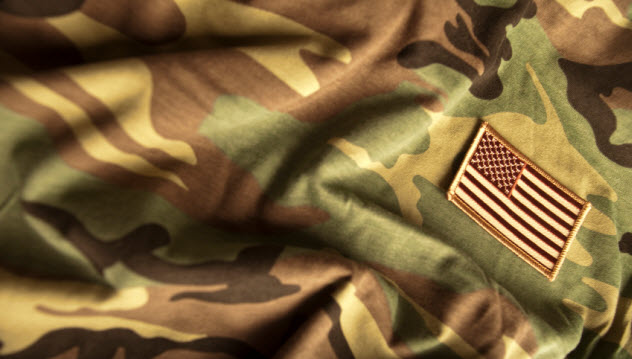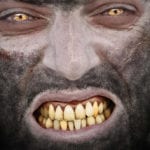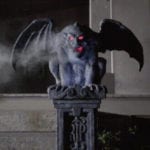 Mysteries
Mysteries  Mysteries
Mysteries  Creepy
Creepy 10 Scary Tales from the Middle Ages That’ll Keep You up at Night
 Humans
Humans 10 One-of-a-kind People the World Said Goodbye to in July 2024
 Movies and TV
Movies and TV 10 Holiday Movies Released at Odd Times of the Year
 Politics
Politics 10 Countries Where Religion and Politics Are Inseparable
 Weird Stuff
Weird Stuff 10 Freaky Times When Famous Body Parts Were Stolen
 Miscellaneous
Miscellaneous 10 Interesting Things Manufacturers Stopped Making and Why
 Gaming
Gaming 10 Funny Tutorials in Games
 History
History 10 Fascinating Little-Known Events in Mexican History
 Facts
Facts 10 Things You May Not Know about the Statue of Liberty
 Mysteries
Mysteries 10 Devastating Missing Child Cases That Remain Unsolved
 Creepy
Creepy 10 Scary Tales from the Middle Ages That’ll Keep You up at Night
 Humans
Humans 10 One-of-a-kind People the World Said Goodbye to in July 2024
Who's Behind Listverse?

Jamie Frater
Head Editor
Jamie founded Listverse due to an insatiable desire to share fascinating, obscure, and bizarre facts. He has been a guest speaker on numerous national radio and television stations and is a five time published author.
More About Us Movies and TV
Movies and TV 10 Holiday Movies Released at Odd Times of the Year
 Politics
Politics 10 Countries Where Religion and Politics Are Inseparable
 Weird Stuff
Weird Stuff 10 Freaky Times When Famous Body Parts Were Stolen
 Miscellaneous
Miscellaneous 10 Interesting Things Manufacturers Stopped Making and Why
 Gaming
Gaming 10 Funny Tutorials in Games
 History
History 10 Fascinating Little-Known Events in Mexican History
 Facts
Facts 10 Things You May Not Know about the Statue of Liberty
10 Strange Tales About One Of Our Most Storied Comedians
Depending on whom you ask, Richard Pryor was either the greatest comedian who ever lived or the most damaged. Jerry Seinfeld called him the “Picasso of comedy.” Robin Williams likened the experience of seeing Pryor live to watching Coltrane perform. The legendary film critic Pauline Kael praised Richard Pryor: Live in Concert, the first stand-up show to receive a theatrical release, as “probably the greatest of all performance films.”
But Pryor had a dark side. Despite his eventual fame and fortune, he struggled with his demons all his life. In his later years, he developed MS and died of a heart attack at age 65. Here are 10 surprising stories that you might not have known about the legendary funny man.
10 He Grew Up In A Brothel
Born in Peoria, Illinois, in 1940, Richard Pryor, the son of a prostitute named “Gertrude” and a pimp named “Buck,” grew up in a brothel owned by his grandmother. Although he was fairly insulated from the sordid details of the business, he often witnessed things that no child should, including seeing his mother perform sex acts on the local mayor.
He would later say, “At least, she didn’t flush me down the toilet, like some.” This wasn’t a joke. According to Pryor, he once found a shoebox with a dead baby inside that he believed was probably one of his less fortunate siblings.
As a child, Pryor saw and experienced many terrible things. He was sexually abused by a neighbor. He witnessed his mother trying to castrate his father with her fingernails. He lost his virginity to a 27-year-old woman when he was nine. Perhaps worst of all, he was often brutally beaten by his father and his grandmother, a 183-centimeter (6′) tall, 90-kilogram (200 lb) woman who carried a switchblade in her bra.
9 He Was Kicked Out Of The Army

In 1956, 17-year-old Pryor was a high school dropout with a pregnant girlfriend. With limited opportunities available, he decided to join the army. He was eventually stationed in Germany, a place he’d hoped would be more tolerant than 1950s Peoria. However, it was just as bad, if not worse. In one incident, he was attacked by three US soldiers wielding tire irons and had to defend himself with a lead pipe.
However, Pryor wasn’t always the victim. During a screening of Imitation of Life (Douglas Sirk’s tense drama about racial prejudice), Pryor was offended by a white soldier who kept laughing at “all the wrong spots.” Pryor confronted the man and slashed him seven times with a hidden switchblade. Amazingly, the soldier wasn’t badly hurt. It was, however, the end of Pryor’s military career. He spent a month in the brig before receiving his discharge.
8 He Started Out As A Singer
Before his army career ended, Pryor had some positive experiences while taking part in amateur military variety shows. When he returned to the US in 1960, he decided that he’d try his hand at the entertainment industry. His first job was at a Peoria bar called Harold’s Club.
He got the job by telling the eponymous Harold that he could sing and play the piano. In reality, he could only play four chords. Unsurprisingly, his singing career never really took off, but audiences responded well to the little comedy routines he did between songs.
In 1963, he moved to New York to continue his act, which was now a mixture of stand-up and singing. During this time, he opened for the likes of Bob Dylan and Nina Simone. In her autobiography, Simone said, “He shook like he had malaria, he was so nervous. I couldn’t bear to watch him shiver, so I put my arms around him there in the dark and rocked him like a baby until he calmed down.”
Little information remains about Pryor’s singing career. But we do know that he eventually stopped singing altogether and moved completely into comedy. One of the few videos of him during this time shows him singing “Nobody Knows You When You’re Down and Out.”
7 He Once Tried To Rob The Mafia With A Fake Gun
While still working on his act, Pryor traveled the country, working as an emcee at various comedy clubs. At 19 years old, he was emceeing at a club in Youngstown, Ohio, when a stripper—one of the other acts—came to him in tears, saying that the club owners had refused to pay her.
Pryor decided that he was going to help her by forcing the club owners to pay up. The only problem was that the club was owned by the Mafia. Nevertheless, Pryor took a blank cap pistol, busted into the manager’s office, and shouted, “You motherf—kers! Give me the money!”
According to Pryor—who talked about the incident on his album Live on the Sunset Strip as well as in his semiautobiographical film, Jo Jo Dancer—the manager simply laughed in his face and called his friends in to see the hysterical black kid trying to rob the Mafia with a cap pistol.
6 His Early Comedy Material Was Family-Friendly
Despite his later reputation for profanity, Pryor’s earlier routines contained the sort of squeaky clean material you’d expect from someone like Bill Cosby—back when people thought that Bill Cosby was squeaky clean. In fact, Pryor considered Cosby his archrival early in his career, and much of Pryor’s material was heavily inspired by Cosby’s routines. Later, Pryor described this brand of inoffensive humor as “white bread.”
Still, he had some early success. He made his first TV appearance in 1964 and went on to appear on The Ed Sullivan Show and The Tonight Show Starring Johnny Carson. In 1967, Pryor decided he didn’t want to continue with his staid style of comedy. In the middle of a performance at the Aladdin Hotel in Las Vegas, he shouted, “What am I doing here? I’m not going to do this anymore!”
He stormed offstage and went home. Apparently, he had seen Dean Martin in the audience and realized just how lame he looked. According to Pryor, he was blackballed from the industry for a few years. But when he finally came back, his comedy had the brutal, unflinching honesty for which he would later be known.
5 He Attacked A Director And Tried To Kill A Producer
The Mack (1973) is a seminal blaxploitation film that has some interesting behind-the-scenes stories. The first draft of the script was written on toilet paper by Robert Poole, a convict who was serving a sentence at San Quentin.
Harvey Bernhard, an independent producer, acquired the script and wanted to make it on a shoestring budget like other successful blaxploitation films. However, Michael Campus, the director, chose to rewrite the script with the film’s costars, Max Julien and Richard Pryor.
Pryor approached the writing sessions with gusto, channeling the painful memories of his childhood. While Campus and Julien did contribute to the script, Pryor went above and beyond, hosting all-night writing sessions. However, he wasn’t paid for his writing because there’d never been an official agreement.
As Pryor fumed over this perceived injustice, his behavior became more erratic on set. He began to overindulge in cocaine and alcohol while blatantly inviting prostitutes to his trailer for all-night parties. He was drunk or high for much of the movie, and in one scene, the director had to literally prop him up to make sure he didn’t collapse.
Meanwhile, Campus had decided to shoot the film in Oakland to make it more authentic. However, Oakland was in the middle of a turf war between the Ward Brothers and the Black Panthers. Although Campus came to an agreement with the Ward Brothers, he still hired a team of armed guards.
Unknown to Campus, his deal with the Ward Brothers had angered the Panthers. One day, while setting up for a shoot, the Panthers rained down bottles on the cast and crew from nearby rooftops before disappearing.
However, the most dangerous element was Pryor. Probably influenced by his ongoing feud over payment, Pryor tried to antagonize Campus one day by insulting his deceased mother. When Pryor failed to get a reaction, he savagely sucker punched Campus in the jaw and knocked him out.
The armed guards drew their weapons. But costar Max Julien put himself between the gunmen and Pryor and managed to get Pryor back to his hotel room. Later that night, Pryor went to producer Bernhard’s room with an improvised weapon (a sock filled with metal) and said, “I’m here to kill you.” Bernhard grabbed a knife and was just about to “cut [Pryor’s] throat” when Bernhard’s wife intervened and managed to calm them both down.
4 He Set Himself On Fire
The famous Gene Wilder–Richard Pryor comedy team was established when they worked together on Silver Streak (1977). But in 1974, they almost worked together on Blazing Saddles. According to Mel Brooks, he hired Pryor to cowrite Blazing Saddles and to costar with Wilder.
Ostensibly, this was because Brooks wanted to run every use of the n-word in the script past Pryor for his okay. However, as with The Mack, Pryor ended up writing a sizable portion of the film, and the character of Black Bart became more like Pryor with every rewrite.
According to Brooks, Pryor came to the writing sessions every morning with a bottle of Courvoisier and lots of cocaine. With his drug and alcohol problems growing out of control, the studio executives decided that they didn’t want to take such a huge financial risk on a relatively unknown and potentially troublesome Pryor.
Brooks begged the studio to reconsider. When they didn’t, he threatened to quit. But Pryor was concerned that he wouldn’t receive his final writing check if Brooks quit the movie, so Pryor convinced Brooks to stay. Eventually, the role of Sheriff Bart went to Cleavon Little.
This wasn’t the last time that Pryor lost an iconic film role. Trading Places (1983) was developed as a Richard Pryor–Gene Wilder comedy. However, the film was recast after Pryor attempted to commit suicide by dousing himself with rum and setting himself on fire. He suffered severe burns. But despite doctors telling him that he wasn’t likely to survive, he returned to performing the following year.
3 The West Hollywood Bowl Incident
In 1977, Pryor was a headliner at A Star-Spangled Night for Rights, a benefit arranged by The Save Our Human Rights Foundation, one of the first gay rights organizations. The group had formed in response to an ongoing antigay campaign by Florida conservatives. The aim of the event was to “educate people but in a nice, glossy way.” Approximately 17,000 people arrived to watch the night’s festivities, and one journalist described it as a potential “cabaret version of Woodstock.”
However, the atmosphere was oddly staid. Even though it was an event aimed at promoting gay rights, nobody was allowed to say the word “gay.” Swearing was also out of the question. Pryor, who hadn’t been told that it was a gay rights fundraiser when he was booked, was bemused by the whole event. Why he—a notoriously foulmouthed and edgy comedian—had been invited to perform at an event where nobody could swear or talk about the subject at hand was a complete mystery.
Eventually, his bewilderment turned to anger as he witnessed other black performers treated with racist contempt backstage. When he finally took to the stage, he was ready to explode. “I came here for human rights,” Pryor said, “and I found out what it was really about was about not getting caught with a d—k in your mouth.” Next, he became oddly candid, talking about his own bisexual experiences before launching into a homophobic tirade.
He chided the gay community for what he perceived as hypocrisy: “When the n—rs were burning down Watts, you motherf—kers were doing what you wanted on Hollywood Boulevard, didn’t give a s—t about it.” Finally, he bent over, telling the audience to “Kiss my happy, rich, black ass” and walked offstage to a deafening chorus of boos.
The incident split the gay community right down the middle. While some people claimed that Pryor was nothing more than an incendiary homophobe, others believed that he had rightly exposed the hypocrisy and bigotry present in the community. Nevertheless, despite having one of the most public meltdowns in Hollywood history, Pryor once again survived relatively unscathed.
2 He Was A Nightmare During The Filming Of Stir Crazy
In 1980, an Arizona cable TV show was granted an interview with Pryor on the set of Stir Crazy. At first, everything seemed fine. Pryor was calm and lucid. Then a technical issue caused them to take a short break. By the time they came back, Pryor seemed to have gone completely insane.
Apparently, he had started freebasing cocaine that he bought from an outlaw motorcycle gang. Although he had been problematic on movie sets before, he was getting worse, regularly coming to work four hours late and leaving the rest of the cast and crew waiting around.
In one instance, he shut down the entire production by walking out after what he considered to be a racially motivated incident involving a piece of watermelon. According to Pryor, a member of the crew threw a slice of watermelon at him. However, this was most likely a paranoid delusion brought on by his extreme drug use because he also believed that some of the crew were shooting guns at his house at night.
Gene Wilder later explained the event as he had seen it. According to Wilder, some of the crew were eating watermelon as a snack and using the pieces as Frisbees. The piece that landed by Pryor’s feet was purely accidental. Nevertheless, he wouldn’t come back to complete the movie until he was paid $500,000.
1 He Hosted A Children’s TV Show
Despite Pryor’s reputation for heavy drug use, his extensive career as an adult comedian, and the many negative stories about him that had appeared in the media, he starred in a 1984 children’s show called Pryor’s Place. Airing on Saturday mornings, it had a Sesame Street style to it.
Ray Parker Jr. sang the opening song. A bevy of famous guest stars also appeared, including Robin Williams, Rip Taylor, and Kareem Abdul-Jabbar. For a children’s show, many of the episodes dealt with weighty issues, such as adoption, bullying, and child abuse.
Despite the immense talent involved and the fact that the show was nominated for a few Emmy Awards, it only lasted one season. Pryor’s Place has faded into obscurity these days. However, some of the episodes are still available on YouTube.
Aaron Short has previously written for both Listverse and Cracked.com, and he always watches Brewster’s Millions at Christmas.








